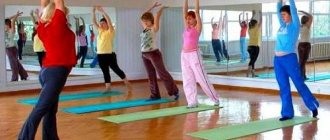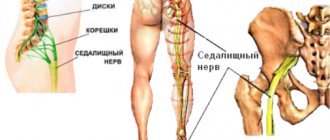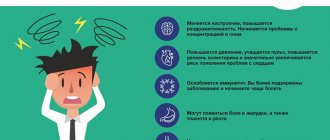On the one hand, technological progress has greatly simplified our lives, but on the other hand, year after year it inexorably disrupts our natural biorhythms.
It is especially difficult for residents of megacities to fall asleep on time, since in large cities the night light is so bright that it is almost impossible to find yourself in complete darkness, which is necessary for proper sleep.
According to statistics, 50% of the world’s adult population suffers from sleep disorders, and children and adolescents are increasingly at risk.
Breathing exercises for sleep: what is it?
Breathing exercises before bed should be performed daily. Only under this condition will it be as effective as possible. But infrequent exercise is unlikely to bring tangible benefits.
Relaxing gymnastics were invented by American doctors. Their goal was to create a training method that would help fall asleep in just a couple of minutes.
Breathing exercises for sleep are based on the practice of ancient Indian yogis and are called “4-7-8”. These numbers mean how much time you need to spend on each stage of breathing. In other words, while performing the exercise, you need to inhale for 4 counts, hold your breath for 7 counts, and exhale deeply through your mouth for 8 counts. In this case, you need to take several such breaths. And preferably at least 10.
The advantage of such gymnastics is that it can be performed anywhere, at any time. Moreover, you don’t need any improvised means for this. Just lie down or sit down and start doing the exercises.
According to experts, to quickly fall asleep, you need to do gymnastics twice a day - in the morning and in the evening. Thanks to classes 2 times a day, you will notice positive changes after the first week of such practice.
Note that breathing exercises for sleep are aimed at creating inner peace, as well as complete relaxation of the soul and body.
The connection between sleep and breathing
At first glance, it may seem that breathing and healthy sleep have nothing to do with each other. But if you try to fall asleep in a stuffy and hot room, being in an irritated state or worrying about important things planned for tomorrow, it becomes clear that without physical relaxation and mental balance, you can forget about a full night’s rest. Busy with restless thoughts and starved of oxygen, the brain is not able to completely switch off, preventing a person from falling asleep quickly. And correctly selected breathing exercises in this case help to reduce discomfort to a minimum, allowing the body to relax and tune in to rest.
These exercises will also help strengthen your immune system.
By regularly performing exercises of this kind, you can:
- cleanse the airways, getting rid of chronic respiratory diseases;
- improve blood circulation, providing brain cells with additional oxygen flow;
- relieve muscle spasms and get rid of pain;
- normalize the functioning of the nervous system, reduce emotional stress and mental fatigue;
- strengthen the immune system and reduce the risk of developing many diseases of the endocrine, cardiovascular and gastrointestinal systems.
In addition, breathing exercises help the brain to distract itself from restless thoughts that prevent you from falling asleep quickly: performing such exercises requires full concentration on the alternation of inhalations and exhalations, leaving no time for the fears and anxieties accumulated during the day.
Rules for performing breathing exercises
The rules for performing breathing exercises are not limited to inhaling for 4 counts, holding your breath for 7 counts, and exhaling for 8 counts. It is very important to breathe slowly, since fast breathing no longer relaxes, but invigorates a person.
Note that when performing gymnastics, you should inhale through your nose and exhale exclusively through your mouth. Moreover, the exhalation must be “warm”. That is, when you exhale, you seem to warm the air in the room, while making a noisy sound “HA”.
In the first week of classes, it is enough to take only 2-3 breaths in the morning and 2-3 breaths in the evening. This is quite enough to get started. There is no need to do more in the first 2 days, since you may feel dizzy from an excess of oxygen.
Try to increase your oxygen load every day. Do one more repetition every day until you reach at least 50 reps. This will help you achieve a sleeping effect faster after the exercise.
You can do gymnastics in any body position. You can choose from: sitting, standing and even lying down. At the beginning, we recommend performing the exercise in a sitting position, leaning back in a chair. This way, you can breathe as deeply as possible, which is very good for complete relaxation.
Important point: Make sure that your stomach is fully protruded when you inhale, and pulled in as much as possible when you exhale. This breathing style trains the diaphragm, the muscle that separates the chest and abdominal cavity.
It is worth emphasizing that breathing exercises for sleep are carried out slowly, and all exercises and movements are performed slowly. According to the creators of this complex, unhurried execution makes each breath as effective as possible for quickly falling asleep.
To enhance the effect
The results of using breathing exercises for insomnia will appear much faster if you combine it with additional factors that help you fall asleep quickly. First of all, for a sound and healthy sleep, you need a properly organized sleeping place - best of all, if it is a high-quality orthopedic mattress and a special pillow. In the absence of disturbances in the functioning of the respiratory and cardiovascular systems, the latter can be abandoned altogether - this will significantly improve cerebral circulation and ensure the health of the cervical spine.
Aromatherapy is also useful in this case: a few drops of oil can be added to an aroma lamp or applied to a handkerchief and placed under the pillow. Thanks to this, breathing exercises will become not only more effective, but also enjoyable. Problems with falling asleep are perfectly solved by bergamot, jasmine, cedarwood, lavender or rose oil, and you can make sleep deeper and get rid of painful dreams with the help of sandalwood oil, rosemary or lemon balm. In addition, while performing breathing exercises, you can use soft music for relaxation as a background, which helps to completely relax the body and tune it in the right way.
Facial gymnastics for women and men with insomnia
To fall asleep, facial gymnastics for women and men is often used, which can quickly put you to sleep. The essence of this exercise is to relax the facial muscles, the tension of which can cause insomnia. Typically used for relaxation:
- Temple massage. To perform this exercise, you need to place two fingers on your temples and move them clockwise, pressing slightly on the skin. The duration of this exercise is at least 1 minute;
- Eyelid massage. To perform it, you should make circular movements, as if circling your eyes with the fingers of both hands. The eyes, of course, should be closed. Do 7-10 such movements;
- Forehead massage. To do this, place the fingertips of both hands on the middle of your forehead. And then massage it with rubbing movements, moving the fingers of your left hand from the center of the forehead to the left temple, and the fingers of your right hand to the right. To relax, it is enough to spend 1-2 minutes on the exercise.
How many hours before bedtime should you exercise?
If you have insomnia and can’t fall asleep for several hours, sudden physical activity in the middle of the night will, of course, exhaust you, but falling asleep right away is unlikely to help.
Even 20-30 minutes of exercise four to six hours before bedtime will help you get tired faster and, as a result, fall asleep faster at night.
We tell you what loads you should choose to sleep well at night.
7 foods that will help prevent heart attacks
Relaxing gymnastics for insomnia
Breathing exercises for sleep are effective on their own. However, its combination with relaxing gymnastics for insomnia makes breathing practices even more useful.
To perform the first exercise, you should take a lying position. Then, leaning on only one hand, turn your body on its side, while holding your hand above you. You should hold this position for at least 30 seconds. After this, changing your supporting hand, take the opposite body position and stand there for at least 30 seconds. That is, the same amount of time as with support on the first hand. Note that this exercise is designed for more or less trained people. Therefore, include it in your training program at your discretion.
The second relaxation exercise, like the first, is static. Therefore, it is performed in a stationary position. To perform it, lie on your stomach, lift your leg up and hold it for 1 minute. Repeat the exercise in the same way with the other leg.
Both of these exercises will relax all the muscles in your body and allow you to fall asleep quickly.
What is good to drink at night?
So what should you drink before bed to help you sleep better? Traditional medicine offers the most soothing and sleep-helping drinks. Honey medicines are very good in this case:
- Honey with apple cider vinegar. Dilute a tablespoon of honey and the same amount of natural apple cider vinegar (prepared yourself) in a glass of warm water. Drink half a glass an hour before bedtime and the second immediately before going to bed.
- Pumpkin juice with honey. A glass of juice and a tablespoon of honey.
Chamomile tea
Various herbs work well against insomnia. One of the leading places is occupied by chamomile tea, infusion or decoction:
- Pour dried chamomile flowers into a thermos at the rate of two tablespoons per glass of boiling water, leave for three hours and drink before bed.
In addition, you can take other flower teas:
- Flower collection. Pour a tablespoon of lavender and passionflower into two glasses of boiling water and leave for 20 minutes, then strain. Dilute a quarter glass of infusion with hot water (like ordinary tea leaves) to a glass and drink half an hour before going to bed. The rest can be stored in the refrigerator.
- Dill infusion. You can use fresh, dried or seeds. A tablespoon of dry (seeds) or two fresh crushed ones is poured into two glasses of boiling water, infused for 15 to 20 minutes, filtered, and taken just before bed, one or two teaspoons.
- Crush the dill seeds in a mortar and pour in 500 ml of Cahors, put on medium heat, bring to a boil, reduce to low and cook for 25 minutes. Strain, cool. Take 50 ml before bed.
Prepared infusions can be stored in the refrigerator for no more than two days.
Kefir or yogurt, milk
A glass of kefir, milk or natural yogurt is a recognized remedy for normalizing the process of falling asleep. It is better if they are at room temperature, but the milk can generally be heated. To make this insomnia remedy even more effective, you can add additional components. What can you drink before bed based on milk:
- Lemon juice, honey and walnuts. This is an excellent natural sleeping pill, in addition, it strengthens the immune and nervous systems, and also improves memory. Add two tablespoons of buckwheat honey and the same amount of grated walnuts to 200 ml of lemon juice. Everything is thoroughly mixed and taken one tablespoon at a time, washed down with warm milk, before bed.
- Heat a glass of milk slightly and add half a teaspoon of ghee to it. Drink at night, snacking on oatmeal cookies.
- Add a pinch of nutmeg, cardamom or cinnamon to a cup of warmed milk. Have a drink at night.
- Mix 200 ml of warm milk with a teaspoon of honey and drink 15 minutes before going to bed.
- A mixture of garlic, milk and honey - chop a clove of garlic, pour into a glass of milk, boil, cool to room temperature, add a teaspoon of honey. Stir and drink.
- Milk with honey and lavender. Add a tablespoon of dried lavender flowers to half a liter of milk and bring to a boil. Remove from heat, cover and leave to cool to room temperature. Strain. Drink a cup before bed, adding honey to taste.
Important! Milk is contraindicated for people with poor lactose intolerance. In this case, fermented milk products are used.
Cherry juice
Cherries contain melatonin, the so-called sleep hormone. And it doesn’t matter what condition it is in - fresh, frozen or dried. Two hours before bedtime, it is recommended to eat something light and wash it down with cherry juice, compote or fresh berries.
Important! This remedy is not suitable if you are intolerant or allergic to cherries.
Green tea
The use of this drink as a remedy for insomnia is ambiguous and depends on the individual characteristics of the body. On the one hand, green tea contains thiamine, which helps you fall asleep, but on the other hand, it contains a lot of caffeine, which has the exact opposite effect. And instead of the expected drowsiness, you can get a boost of vivacity.
Green tea also has a diuretic effect, so drinking it before bed will not contribute to a good restful rest during the night.
Tea with mint and lemon balm
This drink has a calming effect. You can use fresh mint and lemon balm or dried plants.
Pour two teaspoons of mint, lemon balm or their mixture with water, bring to a boil, remove from heat, wrap and let steep for about 20 minutes, strain and cool. Drink before bed. You can add honey. But in Morocco, this drink is prepared not with water, but with milk.
Coconut water
This natural drink is an excellent remedy for combating insomnia; in addition, coconut water eliminates heaviness in the stomach after a heavy meal, which also promotes good sleep. At night, it is recommended to take 200 ml of slightly warmed coconut water. Thus, it will begin to act faster and more effectively.
How to relax before bed correctly
The famous scientist Edmund Jacobson once spoke about how to relax properly before going to bed. This American doctor in the mid-20th century developed a special relaxation technique aimed at reducing muscle tension.
Neuromuscular relaxation according to Jacobson involves alternately tensing the muscles of the whole body. As a rule, you should tense your muscles starting with your legs. That is, first the calf muscles, then the thigh muscles, then the buttocks, then the abs, etc., etc. Also, as an option, you can try to start with the muscles of the neck or arms, and finish with the muscles of the legs.
Each muscle must be tensed for 10 seconds, then relaxed for the same 10 seconds. Next, tense other muscles in sequence. For example, if you started with your legs, then tense your abdominal muscles, chest, shoulders, etc.
The effect of Jacobson's relaxation will be noticeable after 2-3 weeks of daily exercise. Doing exercises before bed every day will significantly improve your sleep and make it easier to fall asleep.
Benefits of exercise for sleep
Sleep exercises involve the respiratory system, which many people have problems with today. It’s not for nothing that breathing exercises are always included in training for various sports, because proper breathing provides a person with enough oxygen to perform heavy loads.
Gymnastics for sleep has a positive effect on the human body:
- helps to fall asleep;
- teaches proper breathing;
- relaxes the body;
- is the prevention of cardiovascular, gastrointestinal, and endocrine diseases;
- trains the lungs;
- helps cleanse the respiratory tract.
By spending 15-20 minutes before bed on a breathing exercise, a person not only ensures good sleep, but also keeps the body in good shape and prevents the development of various diseases. For the modern busy person, this is a completely time-saving training option.
Only properly selected exercises that will correspond to the general physical condition and age of the person will bring benefits. So, older people or people who are not used to exercise need to do simpler breathing exercises.
We recommend reading! Click on the link:
Proven exercises and gymnastics for snoring
Exercise for insomnia
Breathing exercises for sleep go well with physical exercises for insomnia. Moderate exercise will relax the muscles of your body, and proper abdominal breathing will help calm your thoughts and set you up for sleep.
Among the exercises that are useful to perform before going to bed are the following:
- Exercise while sitting. Sit on the floor or sofa. Place your feet with your feet facing each other. Cross your arms in front of you. For complete immersion, close your eyes. Stay in this position for 2-3 minutes. At the same time, breathe correctly, “inflating” your stomach to the maximum as you inhale and drawing it in as you exhale;
- Lying exercise. Lie down on a hard surface and raise your legs a few centimeters up. Hold in this position for 10-20 seconds. Then lower your legs and rest. Repeat leg lifts a couple of times;
- Lying exercise No. 2. While on the floor, do a reverse boat. To do this, you need to lean on the floor only with your shoulders and heels. Stay in this position for 15-20 seconds, then rest. Do 3-4 such approaches;
- Half-lifts of the body. From a lying position, you need to rise a little, as if bending the body on the abdominal muscles. Stay in this pose for 10-15 seconds. Return to the starting position. Then relax and repeat the exercise 2-3 times.
General recommendations for good sleep:
- Do not drink a lot of fluids, with the exception of taking medications.
- Don't disrupt your sleep schedule on weekends. It is a mistake to think that you can sleep off the weekend and be more alert during the work week.
- Put away your phone and technology a few hours before bed. Blue light reduces melatonin production, making it harder to fall asleep.
- If you often have trouble falling asleep at night, avoid napping during the day.
- Don't go to bed if you know you won't fall asleep. Better do something monotonous and relaxing, like reading.
6 useful things you can do right in your sleep
Source
Exercises to calm the nervous system
Often in everyday life you can hear a fairly common phrase: “All diseases come from nerves.” Indeed, the state of the nervous system has a close relationship with the state of health. And among those people who do not know how to control their nerves, there are very often people with hypertension, ulcers, and heart patients.
Exercise No. 1
This stress-relieving exercise can be performed in any position that is comfortable for you - sitting or standing. First you need to take a deep breath. Then you need to hold your breath, mentally imagine a circle and slowly exhale it. Exhale three more circles in this manner, and then imagine a square and also mentally exhale it twice.
Exercise No. 2
The exercise is done lying on your back. It is necessary to establish rhythmic, calm breathing and imagine that with each inhalation your lungs are filled with vitality, and as you exhale it spreads throughout all parts of the body.
Exercise #3
According to many experts, a yawn helps fill the blood with oxygen and free it from excess carbon dioxide. Also, during a yawn, tension in the muscles of the mouth, face, and neck occurs, which leads to an acceleration of blood flow in the vessels of the brain. Yawning helps improve blood supply to the lungs and push blood out of the liver, increasing body tone and creating impulses of positive emotions.
These positive properties of a yawn are used by the Japanese who work in the electrical industry - every half hour they do breathing exercises, which greatly help with tension. They collectively break away from work for a short break to have an organized yawn as a group, and then get back to work.
A healthy yawn must be correct: it must be done with your eyes closed and your mouth as wide open as possible. The oral cavity should be tense. In this position, try to pronounce the sound “oo-oo-oo-oo” low and extended and imagine that a cavity is forming inside your mouth, going down.
While yawning, you should stretch your whole body. To make the exercise even more effective, you can do it while smiling. A smile is known to contribute to the formation of a positive emotional impulse and perfectly relaxes the facial muscles.
Exercise #4
If you have to go through a psychologically stressful situation, then in order to maintain composure, self-confidence, and conscious control of the situation, it is recommended to do this exercise. Imagine that there is a powerful press in your body at chest level. Take short and energetic breaths, clearly feeling the presence of this press in your chest, its strength and heaviness. Then take slow, long exhalations, imagining that the weight is falling down and displacing emotional tension and unpleasant thoughts from the body. When finishing the exercise, you need to mentally “shoot” all negative emotions into the ground with your press.
Video with exercises to calm your nerves:
Positive effects of gymnastics
In the short term, proper breathing techniques will help you fall asleep quickly, significantly improve the quality of your sleep, and create conditions for the body to fully recover during the night’s rest. Regular exercise also brings great benefits to your overall health.
Here are the main consequences:
- Improving blood flow, saturating the brain sufficiently with oxygen.
- Normalization of the central nervous system.
- Strengthening the immune system, while reducing the possibility of a wide range of diseases.
- Improving the functioning of the respiratory system will help you forget about colds.
- Leveling psychological stress, getting rid of muscle pain.
Even if there are no problems with the quality of sleep, you feel excellent, then breathing exercises will be an effective preventive measure that will allow you to maintain good health throughout your life.
Causes of sleep disorders
According to statistics, about 30–40% of the world's inhabitants systematically experience various sleep disorders. One of the most common of them is insomnia. This is insomnia, which occurs in representatives of all age groups and is characterized by poor sleep quality and insufficient duration.
Often people who sleep during the day and cannot fall asleep at night attribute to themselves imaginary insomnia. However, in this case we cannot talk about insomnia, since the person cannot fall asleep due to the fact that his body has already rested during the daytime. True insomnia occurs only when a person sleeps less than seven hours a day and at the same time does not want to sleep either day or night.
Insomnia is a malfunction of our “biological clock”, which is responsible for alternating wakefulness and sleep.
There are a number of causes of sleep disturbances:
- non-compliance with sleep hygiene rules (stale air, external noise, excessive lighting);
- anxiety, worry, stressful situations;
- diseases of the nervous system: depression, neuroses, mental illness, neuroinfections, concussions;
- poor nutrition;
- any somatic diseases. In particular, infectious diseases, arterial hypertension, angina pectoris, thyrotoxicosis, peptic ulcer, prostate hypertrophy, itchy dermatoses, arthrosis;
- disturbances of the circadian rhythm, failure of the biological clock;
- bedwetting (enuresis);
- snoring and sleep-disordered breathing (apnea);
- taking medications and stimulants (a cup of strong tea, coffee, dark chocolate, Coca-Cola, alcohol, nicotine, cocaine and amphetamines);
- involuntary movements during sleep, restless legs syndrome;
- elderly age;
- hereditary tendency.
Basic Rules
There are a number of contraindications to performing breathing exercises:
- brain injuries;
- severely increased uncontrolled blood pressure;
- radiculitis;
- spinal injuries;
- severe osteochondrosis;
- acute thrombophlebitis;
- post-infarction state;
- bleeding;
- mental illness;
- serious somatic pathologies.
If there are contraindications, performing breathing exercises is possible only after consultation with a doctor.
When selecting calming breathing movements, you need to learn the most important rules for any technique, failure to comply with which will bring all your efforts down the drain:
- Any breathing exercises to calm the nervous system should be performed in a lying or standing position, in which the back is completely straight.
- It is best to do the exercises with your eyes closed, meditating and imagining pleasant pictures and images.
- You need to fully concentrate on the breathing process; at first you will have to control it consciously. Gradually, there will be a need for conscious control of inhalation and exhalation, but you will still need to concentrate on the breathing process itself.
- The mind should be freed from any negative thoughts, and all muscles should be completely relaxed. Muscle relaxation should be done smoothly - from the tips of the toes and further up the body, paying special attention to the face, neck and shoulders, where the muscles are most tense.
- Calming exercises need to be repeated 5-10 times, but do not overexert yourself. Before moving on to the next exercise, you need to wait a little so that the body has time to adapt.
- While inhaling, you need to imagine how the body, along with oxygen, is filled with calmness and pure energy. As you exhale, you need to imagine how the accumulated tension is “squeezed out” from the body.
- It is also useful during breathing exercises to repeat to yourself attitudes such as “I am calming down”, “I am calm”, “I am relaxing”, etc. Such formulations should not contain negative particles “not” and simply negative content (“I am not worried "), and forms of the future tense ("soon I will calm down").
Breathing exercises for sleep are performed only after preliminary preparation:
- Be sure to ventilate the room where you will perform gymnastics and rest at night. Fresh cool air will maximally enrich the bronchopulmonary system and other organs with oxygen.
- It is advisable to perform the exercises to music. It is better if it is without words, it will help you tune in to relaxation and take your mind off problems.
- Clothes should be light, spacious, and made from natural materials. Movements should not be hampered by cuffs, elastic bands, or belts. The chest opens as fully as possible.
- The exercises are best done alone. This will help you tune in to the correct breathing rhythm and not be distracted by extraneous sounds.
- Full concentration on gymnastics is required. Take a break from extraneous thoughts, throw problems out of your head.
- While doing the exercises, close your eyes or at least dim the lights.
- Like regular sports training, breathing exercises are performed with a gradual increase in tempo. First, perform the minimum number of approaches, completing the exercise as soon as you feel slightly dizzy.
- The duration of exhalation should be longer than inhalation.
- Breathe only at a slow pace through your nose. If you have a runny nose or allergic rhinitis, it is better to postpone classes.
- To evaluate the correctness of the technique, you can place one palm on your chest and the other on your stomach. This will allow you to control the duration and quality of inhalations and exhalations.
If you perform all stages of gymnastics correctly, you will feel slightly tired, which helps you fall asleep quickly and have a long, quality rest.
Calming lower breathing
The principle of calming lower breathing is to work exclusively with the diaphragm.
- Inhale air through your nose, trying to inflate your stomach as you inhale, but not touch your chest.
- Exhale, deflating your stomach.
- Slowly do 5 approaches.
Not everyone can immediately breathe only from the diaphragm, but by improving this skill, a person will be able to quickly switch between full and low breathing.
Lower breathing helps not only to fall asleep, but also to calm down and relax, so this technique will be useful in stressful situations.












